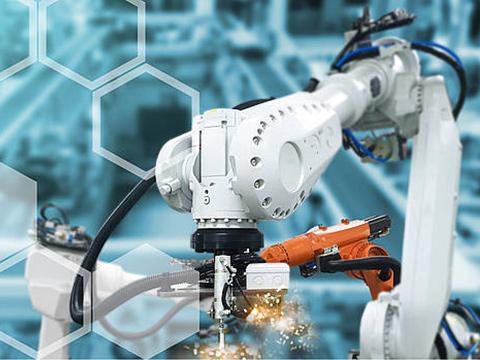
Posted to News on 21st Feb 2023, 15:00
Brakes from KEB ensure safety in robots and cobots
See KEB at MachineBuilding.Live, 4 October 2023, on stand 51

Industrial robots are taking on more and more production tasks. They assemble, transport and ensure greater production efficiencies. With this level of automation, brakes that guarantee precision, speed and safety are critical, as the experts at KEB Automation explain.
As a result of growth in automation, industrial robots are increasingly being used for repetitive work steps. They reduce costs and cut the workload of employees. Robotics can also help with more individual work processes: cobots, for example, are used to improve working conditions and facilitate processes, while maintaining the quality of the products.
Regardless of whether robots are used in industry, medicine, warehouse logistics or in the agricultural sector, the following applies: wherever masses need to be braked and held securely in one position, brakes are required that can reliably perform these tasks.
“Fast movements with large masses such as a car body are commonplace in robotics,” explains Kevin Zysk, sales engineer for brakes and clutches at KEB Automation. “This generates a high mass inertia and thus a high torque. The brake now has the task of holding the robot arm in position and braking the movement safely in an emergency. For this case, there is a safety brake that is actuated in a de-energised state.”
The specific requirements for the brake differ depending on the application. Whilst compact brakes with a high power density are required in medical technology to meet the high safety standards, a long service life of the brake is particularly relevant in industrial applications. Other brake applications require very high positional accuracy which means a backlash-free brake is necessary.
“With the COMBISTOP spring-applied brake and the COMBIPERM permanent magnet brake, KEB offers customers the right brake solution for different robotic applications. In consultation with the customer, we determine which brake best meets the specific requirements,” adds Zysk.
The individual advantages of the spring-applied or permanent magnet brakes become apparent during the selection process. The COMBISTOP brake, for example, has a torque of up to 1,500 Nm and is constantly open after reaching the wear limit. In addition, the spring-applied brake can be equipped with further accessories such as a microswitch for monitoring the wear and condition of the brake, or a release lever for manually releasing the brake.
The COMBIPERM permanent magnet brake on the other hand has a maximum torque of 145 Nm and is characterised by compact dimensions, zero backlash and a higher power density. Furthermore, particularly fast switching times are also a feature, says Zysk: “With the smallest COMBIPERM, the switching time is just 2 milliseconds, with the largest version being only 12 milliseconds. In this way, we can contribute to robots being able to perform their primary task safely and efficiently, thus saving time and costs.”






